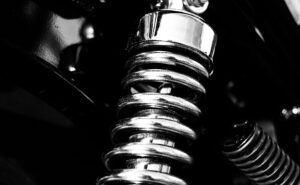The science behind custom spring manufacturing of compression, extension, and torsion springs relies on a combination of material science, engineering design, and an understanding of a product’s performance requirements. Considering the science behind these spring types is important because the majority of custom springs manufactured for industrial applications are still some type of compression, extension, or torsion spring. Through careful material selection and, by following design principles and rigorous testing, engineers can accurately predict how these spring types will function in real-world applications to meet the unique requirements of a specific application. Here’s why:
The Importance of Material Selection
 The material selected for manufacturing a custom spring plays a critical role in determining the performance, durability, longevity and ultimate success of the spring and the product in which it is placed. Material selection is an important decision as it directly impacts the spring’s ability to function effectively and reliably in its intended application while balancing factors such as cost, manufacturability, and environmental compatibility.
The material selected for manufacturing a custom spring plays a critical role in determining the performance, durability, longevity and ultimate success of the spring and the product in which it is placed. Material selection is an important decision as it directly impacts the spring’s ability to function effectively and reliably in its intended application while balancing factors such as cost, manufacturability, and environmental compatibility.
Considerations such as load capacity, operating conditions, environmental conditions, temperature, cost considerations and compliance are taken into account. Because different materials have different characteristics, mechanical properties like yield strength, corrosion resistance, conductivity, elasticity, fatigue resistance, and weight characteristics must also be factored in the material selection process.
High carbon steel, stainless steel, spring steel, titanium, and nickel alloys are common materials in spring applications. However, specialty materials like beryllium copper, Elgiloy, Hastelloy, chrome silicone, and chrome vanadium are available for use in certain applications.
Overall, during the material selection process, custom spring manufacturers work closely with their customers to ensure all these criteria are met to find the right balance between meeting performance requirements and cost-effectiveness.
Application of Design Principles
In the science behind custom spring manufacturing, design principles serve as fundamental guidelines that engineers follow when creating custom springs for various applications. Design considerations would encompass several factors such as material usage, spring geometry, stress and fatigue analysis, dynamic performance and manufacturability. For example, as mentioned above, spring material must have appropriate mechanical properties for the application—the correct yield strength, elasticity, corrosion and temperature resistance, and the like, to ensure the spring can withstand repeated loading cycles and achieve its desired service life.
In spring geometry, factors such as size, shape, coil configuration, and load capacity are carefully calculated. A spring must adequately support the load while allowing for the necessary movement or displacement. Optimal coil diameter, wire diameter, number of coils, and pitch based on the required spring rate, load capacity, stiffness and deflection properties must be determined to achieve the desired performance characteristics while minimizing material usage and cost.
Design principles would also entail an analysis of the stresses and strains experienced by the spring under different loading conditions. This ensures the spring operates within safe limits and experiences acceptable stress levels during operation, with consideration given to both static and dynamic loading conditions. Performing fatigue analysis assesses the spring’s lifespan under cyclic loading to prevent premature failure. Another aspect of design principles is in evaluating the spring’s dynamic performance characteristics, like its resonance frequencies and damping abilities, to ensure that it operates effectively in dynamic applications without excessive vibration or noise.
The design stage should also consider the manufacturability of a spring. If anything, a well-designed spring maximizes its performance while minimizing material usage and manufacturing costs. How the spring can be efficiently and cost-effectively produced using available manufacturing methods and equipment is an essential spring design principle. Designing for manufacturability helps streamline the production process and minimize manufacturing defects.
Testing Methods
Once a prototype has been created, proper testing methods can ensure the performance, reliability, and safety of custom springs. Testing methods help verify that the springs meet design specifications and quality standards, ensuring they function as intended. By subjecting the springs to various tests, manufacturers can validate their performance under different conditions, such as load, fatigue, and temperature, to make sure they meet the required criteria.
For example, force or load testing helps determine the spring’s load capacity, stiffness, displacement and deflection characteristics and makes sure that the spring can withstand the expected loads without failure or excessive deformation. Testing for quality assurance helps identify any potential defects or weaknesses in the springs that could compromise safety and makes sure that the spring design can withstand the expected loads without failure. Through fatigue and life cycle testing, manufacturers can assess the durability of the springs and predict their lifespan under real-world conditions.
Proper testing provides valuable data that can be used to optimize the design of the springs, leading to improved performance and efficiency. It also helps to identify any issues during testing that could result in performance issues in time. Overall, testing methods play a vital role in the design and manufacturing process of springs, helping to enhance their performance, reliability, and longevity for a wide range of applications.
Manufacturing a custom spring for a product involves a combination of engineering expertise, material science, proper design principles, and a thorough understanding of the performance requirements. At James Spring & Wire Company, we offer design assistance and expertise to ensure the success of your products. We are capable of manufacturing many types of custom springs for a wide range of industries featuring an assortment of configurations ranging from complex designs down to basic cuts. For more information on custom spring manufacturing, contact us today.

